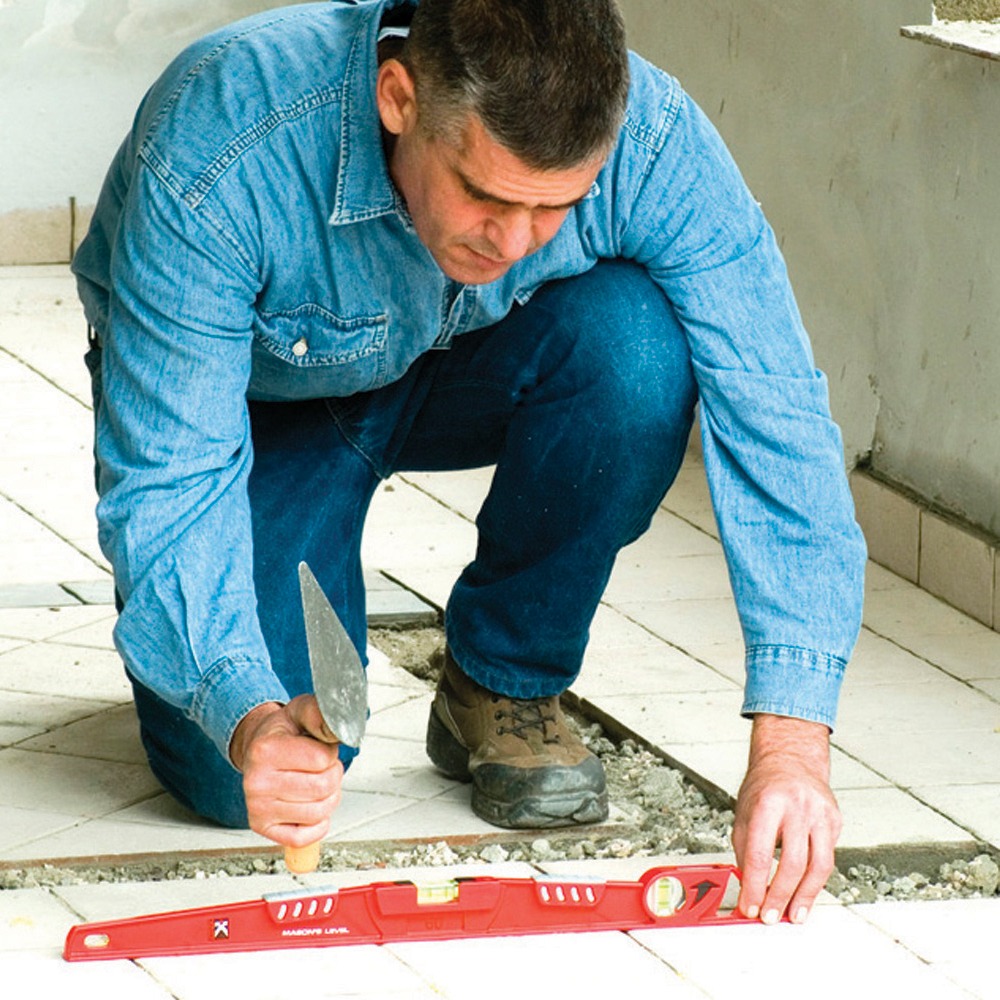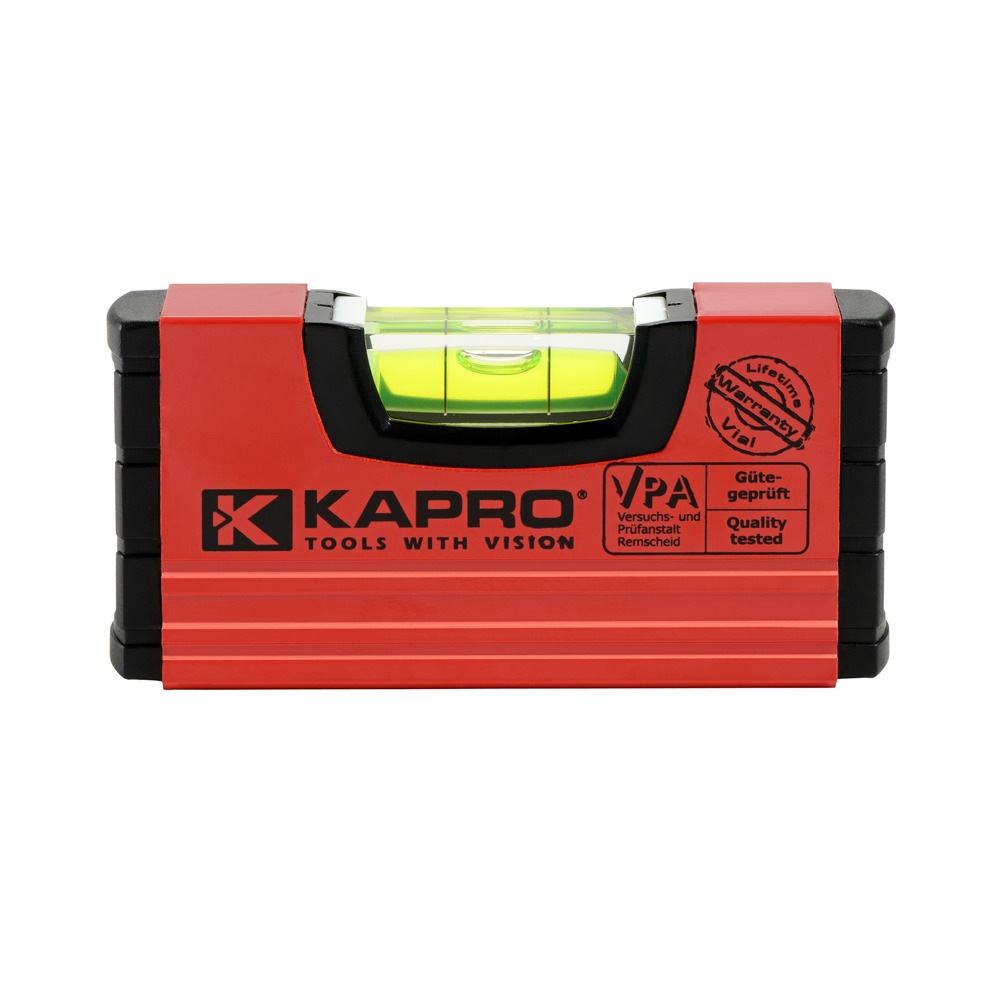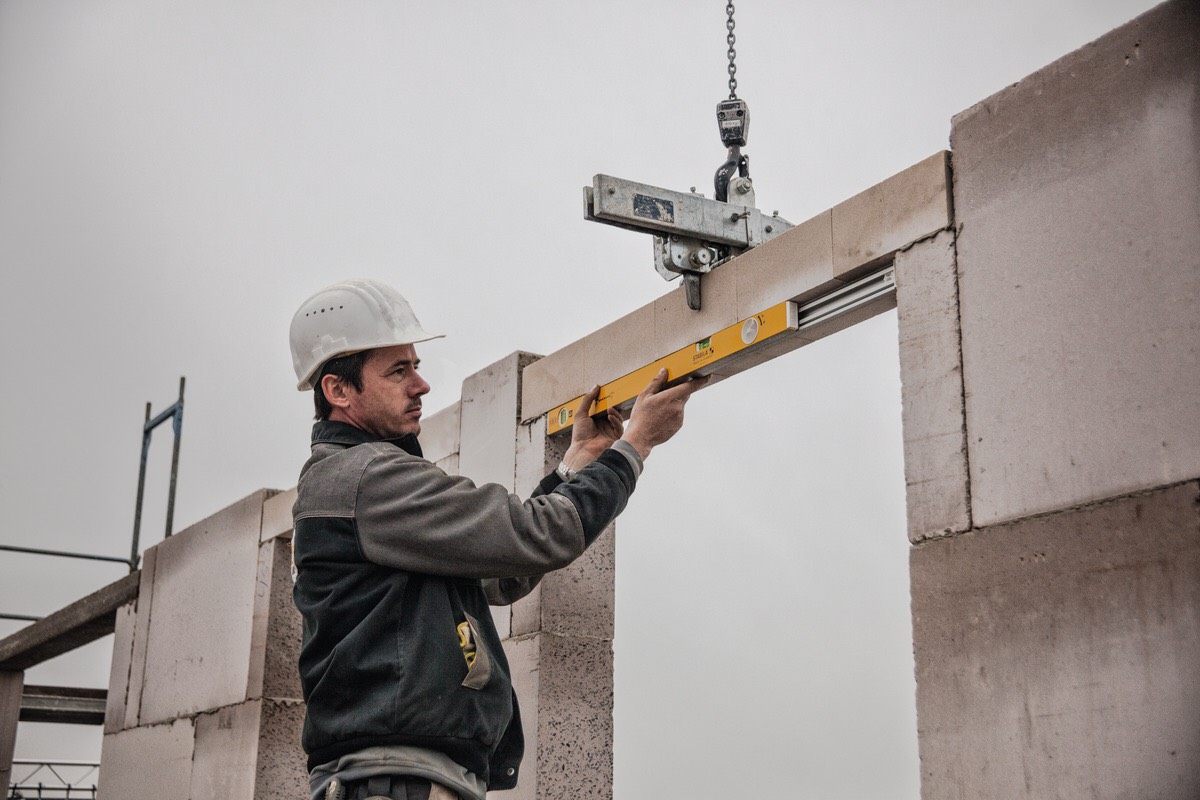Not Your Typical Mason’s Level
While there is indeed a fine variety of measuring and layout tools, it has been brought to the industry’s attention that extendable and pocket levels are becoming a new hot commodity. The typical mason requires a measuring device that is longer than a carpenter’s level for the purpose of laying brick and stone… but who wants to carry around a bulky piece of equipment throughout the day?
These newest adaptations to measurement and layout technology are improving work sites for masons everywhere. Down in a hole building a foundation wall and forgot your mason’s level? Bust out your pocket level instead, there’s no need for your fellow co-worker to waste his time collecting one for you. Up on a ladder and don’t want to risk hauling larger equipment up with you? Use an extendable level for the job and retract it before returning safely back to the ground! These options stem from the standard “bubble level,” but function in new and improved ways.
“…Something nice to carry around in your pocket”
After an interview with Alan Vespo, National Sales Manager of Kapro Tools Inc., we learn that convenience is key in this industry. While regular levels will always be around and worth using, pocket levels are thought to help in certain situations when workers don’t want to carry a bunch of levels in their tool bag, or they want to do something really quick or for a smaller application. Vespo explains, “It’s more of a convenience-type level than to replace what is standard. It’s handy… something nice to carry around in your pocket.”
According to Vespo, these are something that started out as more of a novelty in the industry, or simply something fun to have. Yet, now that it has become more and more popular, it is being made more professional. He states, “Things you would see in a box or masonry level you can now find available within our pocket level. You’ll have the solid acrylic vial, rubberized end caps for the anvil tapping, shockproof vials, magnets, all that stuff. It’s still a professional level… just pocket-sized.”
On the topic of pocket levels not replacing standard levels, Vespo entertains the idea that maybe they actually could, with the opportunity to do so in certain situations. “A person can’t always buy the pocket level instead of other levels. It’s a tool of convenience on the job. Depending on the application and what is being leveled, they canbe used in conjunction with other larger levels. If someone is doing a door set, they will need a 72-inch level. But in everyday application or something that doesn’t call for a larger tool, the pocket size will naturally suffice.” With an increasing variety of technology, construction equipment has become more and more application specific in the professional world.
Extending the Options
A versatile tool for measuring at various lengths is the extendable level. Ideal for door openings and windows, this type of level makes for more precise measurements each time. Typically, a 2 or 4-inch level would be used for these smaller applications, but close measurements are not always feasible, whereas the extendable level provides the benefit of an exact fit. While solving a multitude of level problems, these have been specifically known to considerably reduce the total number of levels a laborer must carry.
Taking over this category of levels, STABILA seems to have perfected the ultimate extendable level options for all masons and carpenters alike. Multiple reviews and research on the topic has proven to show how reliable these products are. A representative from STABILA tells us about how reaping the rewards of this device has been deemed crucial to any laborer. Rich Morse, Product Marketing Manager at STABILA explains, “For example, a contractor can now carry one adjustable 80T instead of two or more traditional levels with fixed lengths. When used properly, extendable levels also help to eliminate various installation errors, such as bowed doors and window bucks.”
“The applications for this type of device are truly endless,” he continues, “from confined work spaces to premature panels and skills. When you need a tool that’s a multi-fit for a wide range of work an extendable level makes sense with easy to read vials for plumb leveling and for speed and accuracy. We are constantly trying to improve our efficiency and quality of work, reducing call backs due to inability to measure or level with accuracy.”
STABILA has been developing and producing extendable levels for years to meet growing market demands, and has an option for nearly all laborers. There are currently three adjustable levels being produced: Plate levels, XTL levels, and 80Ts. Including a twist lock to fix a certain length and available in two sizes, 80Ts are the newest addition to STABILA’s extendable levels category. Morse points out, “the smaller 25 to 41-inch model works great for most headers, and the larger 36 to 59-inch model handles larger openings with ease. Both 80Ts feature a continuous scribe and straight edge and are renowned for setting lintels and door openings in a quick, precise manner.”
A YouTube review published by woodworking industry professional Ron Paulk claims that the STABILA extendable levels are highly durable, and can withstand the rough conditions of a construction site. Paulk claims the 80Ts are the most accurate levels he’s ever owned and raves about the quality, ending the review with “great job STABILA, this is going to be a great tool in my quiver.”
Before the Bubble
The creation and use of “bubble levels” dates far back, but not quite as far as the ancient Egyptian time period. The Egyptians would have loved to use this tool, also known as a “spirit level,” for things like leveling a coarse stone horizontally and for plumbing a sidewall of a stone to fit appropriately next to anther stone.
However, because our standard version of a level was not around during the construction of the Great Pyramids at Giza, the solution at the time was a simple “A” frame structure, most likely made of wood. According to research from Johnson Level, “from the top of the “A” frame was a string attached to the center of the top of the “A”.
A weight was placed on the other end of the string so when gravity took over, the string would hang plumb or straight down. To make seeing plumb easier, a vertical marking or notching out of the wood near where the string was fixed to the frame, would indicate when the string is sitting straight down, or plumb.” It has been determined that when in use, the frame would sit flat on a surface, and if the string did not fall on the center marker then an adjustment would need to be made.”
This level and the plumb rule, much like the standard spirit level of today’s time, is limited by its size. This was overcome by using a combination of a plumb bob with a span to view “level.” The key to this method was making sure the 90-degree angle of the “A” frame was precise as possible, along with making sure the legs of the frame were parallel, and even straight across.
In medieval masonry specifically, the concept of plumb was constantly relied on to find level, but did make a small advancement. An excerpt from Johnson Level’s “History of the Level” claims “in the thirteenth century, there is pictorial evidence of a level which was essentially a straight-edge (typically a long wooden board) with a raised semi-circle in the middle of the top edge where a string hung down with a plumb bob attached. The string would be long enough to hang below the bottom of the level.”
“The reason this tool was an advancement over the ancient tool was that technically, level could only be verified in the ancient tool by comparing the points at which the legs of the “A” frame rested. With the medieval tool, the levelness of the masonry could be checked along the entire length of the board (the level). When working with smaller stones and a larger level, several stones could be checked for level at once, providing a time advantage and greater accuracy.
Thousands of years later, French scientist Melchisédech Thévenot is said to have corresponded with Dutch scientist Christiaan Huygens to create what we know now as the bubble level. These were created using vials incompletely filled, typically with mercury colored spirit or alcohol, leaving a small bubble left in the tube.
“Half a bubble off plumb”
Coined from a combination of the old “A” frame method and the more common spirit level bubbles, “half a bubble off plumb” has become a familiar expression describing something a little off center, or not level. In this day and age, laborers and their clients should never be settling for off center, especially when it took thousands of years for technology to finally catch up with this tool’s innovation.
We live in a time when technology should be used when it can be… to improve convenience and efficiency, to improve our quality of work, and to improve future innovations of said technology. With pocket and extendable levels in hand (or in tool belt) masons and other laborers have the ability to use newer versions of technology to their maximum potential.




